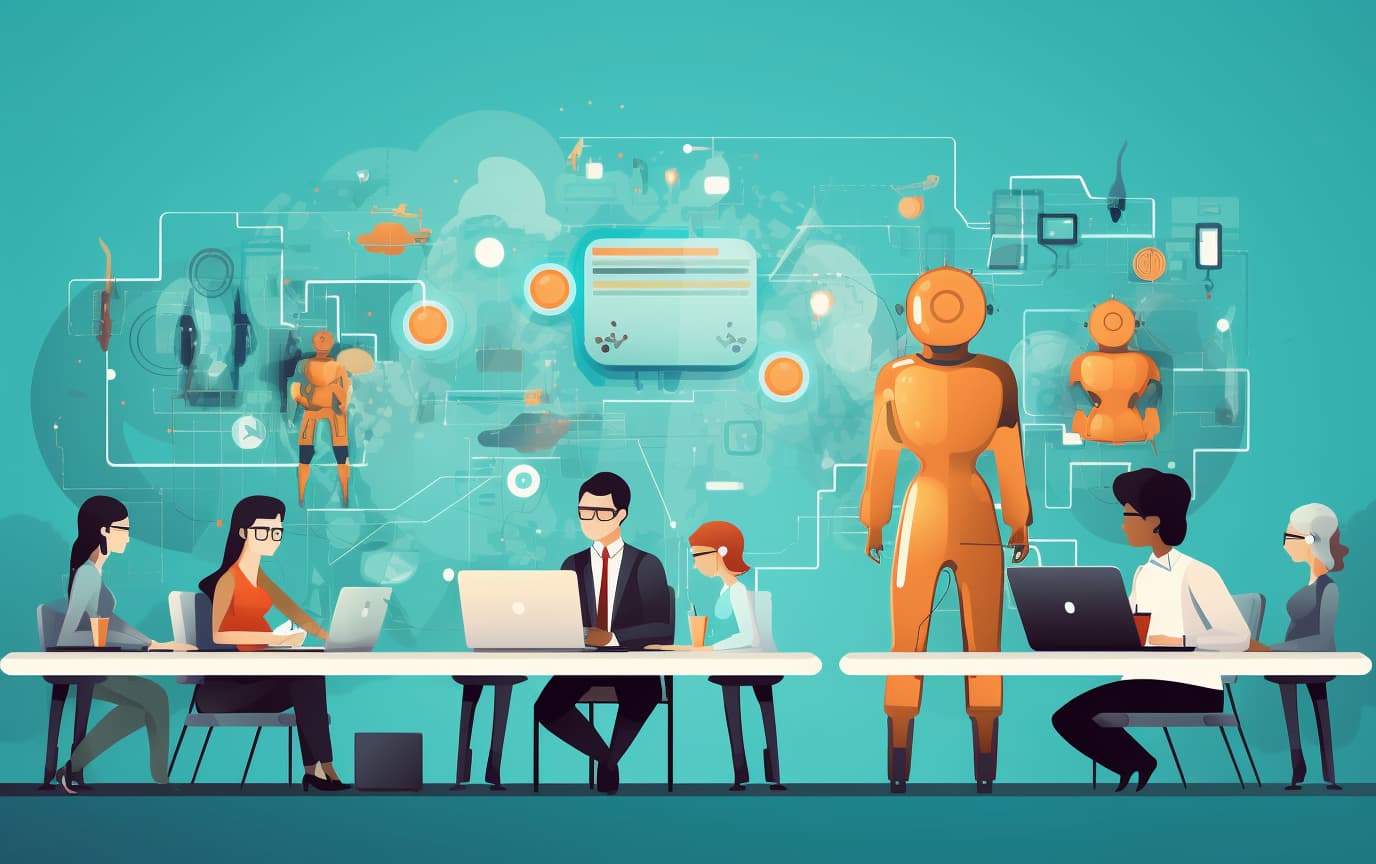In the field of Generative Artificial Intelligence, understanding the distinction between chains and agents is crucial for grasping how AI systems function and are implemented in various real-world applications.
The Functionality and Application of Chains in AI
Chains in AI refer to sequences of tasks or operations that are executed in a specific order. They are fundamental to the structuring of AI processes, offering a systematic approach to handling complex tasks. Let’s explore their key functionalities and applications:

- Sequential Processing: Chains in AI are designed to process tasks sequentially. Each step in a chain is dependent on the output of the previous step, ensuring a cohesive flow of information and actions.
- Modularity and Reusability: AI chains are often modular, allowing different parts of the chain to be reused or replaced without affecting the entire system. This modularity enhances the flexibility and scalability of AI applications.
- Application in Data Processing: In data-intensive tasks, chains are used for preprocessing, transforming, and analyzing data. For instance, a chain might involve data cleansing, feature extraction, and classification in a machine learning workflow.
- Automation of Repetitive Tasks: AI chains are instrumental in automating repetitive and routine tasks, enhancing efficiency and accuracy in processes like data entry, scheduling, and report generation.
Understanding the Role and Decision-Making Process of AI Agents
AI agents, on the other hand, are more complex entities capable of making decisions and performing actions autonomously. They are the 'intelligent' part of AI systems, often mimicking human-like decision-making processes. Key aspects of AI agents include:
- Autonomous Decision Making: Unlike chains, AI agents possess the ability to make decisions independently. They analyze the environment or data and determine the best course of action based on programmed algorithms or learned experiences.
- Learning and Adaptability: Many AI agents have learning capabilities, allowing them to adapt and improve their decision-making over time. Techniques like machine learning and deep learning enable these agents to learn from data patterns and past experiences.
- Interactivity: AI agents are designed to interact with users or other systems. They can respond to queries, execute tasks based on user input, and even learn from user interactions to enhance future responses.
- Complex Problem Solving: AI agents are often employed in scenarios requiring complex problem-solving abilities, such as in advanced robotics, natural language processing, and predictive analytics.
Real-World Applications: Customer Support and Interactive Systems
The practical applications of chains and agents in AI are vast and diverse, particularly noticeable in customer support and interactive systems:
- Enhanced Customer Service: In customer support, AI agents are used to provide 24/7 service, handle routine inquiries, and escalate complex issues to human representatives. They can learn from customer interactions, improving their ability to resolve queries effectively.
- Interactive Chatbots: AI-powered chatbots, a combination of chains for processing and agents for decision-making, offer personalized interactions. They can handle a range of functions from answering FAQs to providing product recommendations.
- Automation in Call Centers: Chains in AI streamline call center operations by automating tasks like call routing, information retrieval, and basic customer interactions, allowing human agents to focus on more complex customer needs.
- Intelligent Virtual Assistants: Virtual assistants, powered by AI agents, assist users in various tasks such as setting reminders, searching for information, and controlling smart home devices through natural language processing and machine learning.
The distinction between chains and agents in AI is key to understanding how artificial intelligence can be effectively applied to solve real-world problems. While chains provide the structural backbone of AI processes, agents bring the element of intelligence and adaptability, essential for interactive and autonomous AI systems. Together, they form the foundation of modern AI applications, driving innovation and efficiency across various industries.
Generative AI Networks (GAINs): Chains Formed by Connected Agents
Generative AI Networks (GAINs) epitomize a progressive approach in artificial intelligence, where the chaining of multiple interconnected agents leads to sophisticated problem-solving and advanced process management capabilities. In GAINs, each AI agent, specializing in a particular function, contributes sequentially to a broader task, thereby forming a cohesive and dynamic chain.

Concept of GAINs in AI
GAINs refer to a network where individual AI agents are linked, with the output of one agent feeding into the input of the next. This structure not only enhances decision-making capabilities but also streamlines various operations within a system. By leveraging the collective power of specialized agents, GAINs can tackle complex challenges more efficiently than standalone agents.
Illustrative Examples of GAINs
- In Supply Chain Management: Consider a logistics network where different GAINs components are responsible for distinct elements like inventory tracking, logistics coordination, and delivery scheduling. An inventory management agent's decisions on stock levels automatically inform the logistics agent's planning strategies, creating a seamless operational flow.
- Healthcare Diagnostics and Treatment: In a healthcare setting, GAINs could revolutionize patient care. One agent could analyze patient symptoms, another could interpret diagnostic tests, and yet another could formulate treatment plans. This chain of specialized agents ensures a comprehensive and multi-faceted approach to healthcare.
- Customer Service Systems: GAINs can transform customer service by employing a series of agents for handling inquiries, escalating issues, and conducting follow-ups. This ensures a continuous and integrated process for addressing customer needs, enhancing overall service quality.
Advantages of GAINs
- Expertise at Each Step: GAINs allow for high specialization, with each agent focusing on its core competency, leading to expert-level outputs throughout the network.
- Scalable Systems: The modular nature of GAINs means that as tasks grow in complexity, additional specialized agents can be integrated without overhauling the entire system.
- Adaptive and Resilient: GAINs offer the flexibility to adapt by updating or replacing individual agents, making the network resilient to changes and advancements in technology.
Challenges in Implementing GAINs
- Communication Protocols: Establishing robust and efficient communication channels/chats between agents is critical to ensure the smooth transfer of information.
- Risk of Error Propagation: Mistakes made by one agent could affect the entire network, necessitating robust error-checking mechanisms.
- Coordination Complexity: Managing a network of multiple agents, particularly in real-time scenarios, can be challenging and requires advanced coordination strategies.
Generative AI Networks are a transformative approach in the Generative AI landscape, enabling complex and layered tasks to be executed with precision and efficiency. By harnessing the collective strengths of interconnected agents, GAINs are poised to drive innovation and effectiveness across various sectors, from logistics and healthcare to customer service and beyond. As AI continues to evolve, GAINs stand out as a testament to the power of collaborative intelligence in artificial systems.









